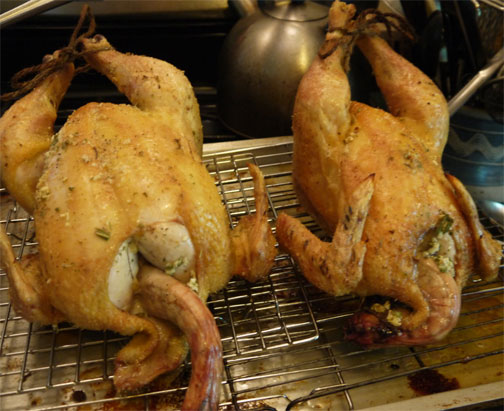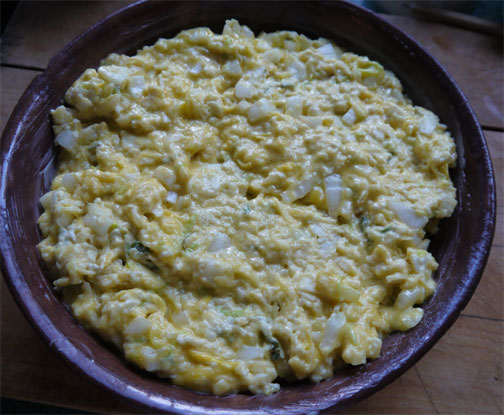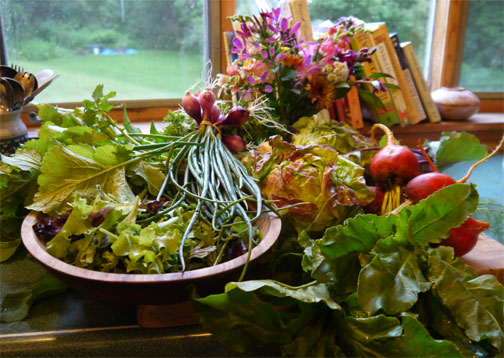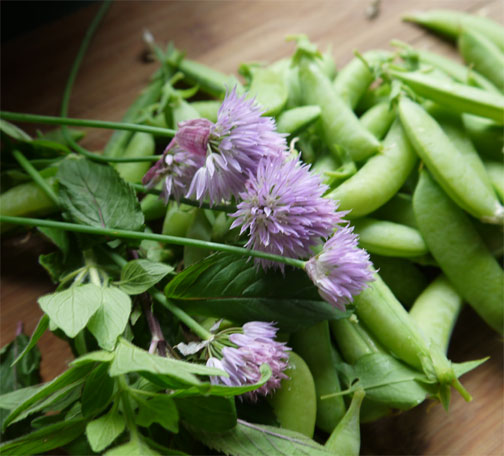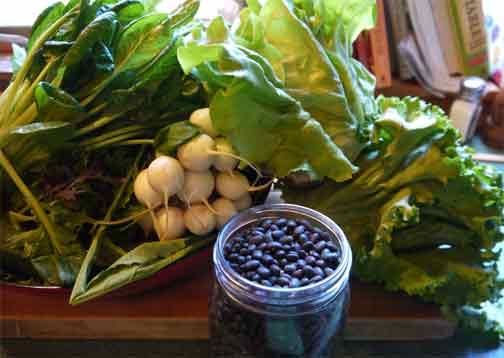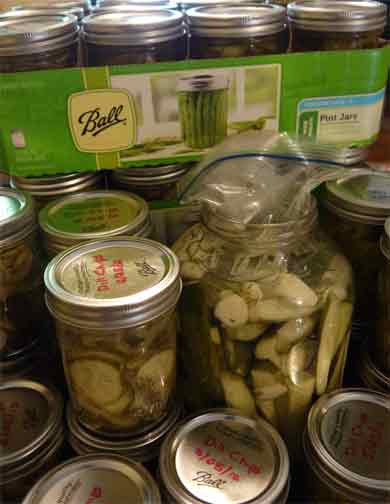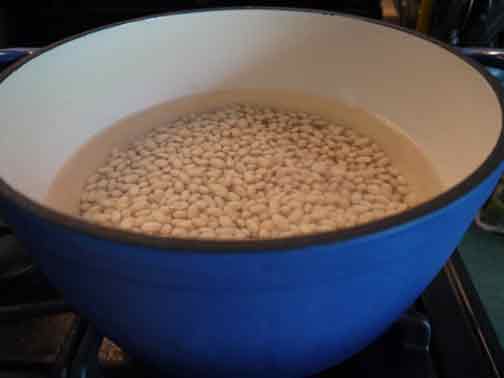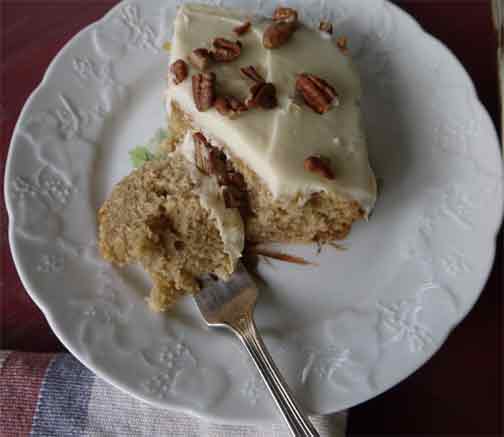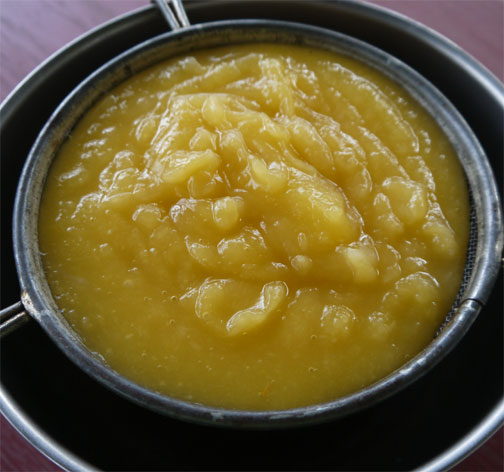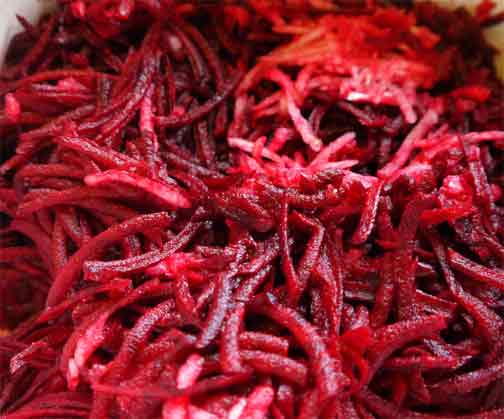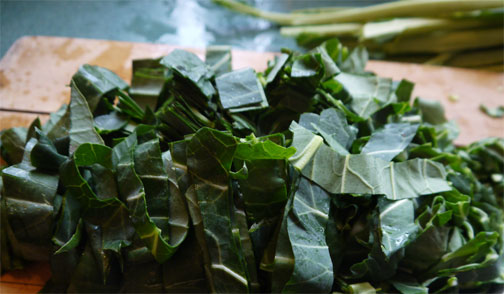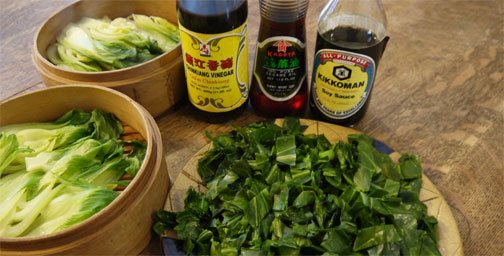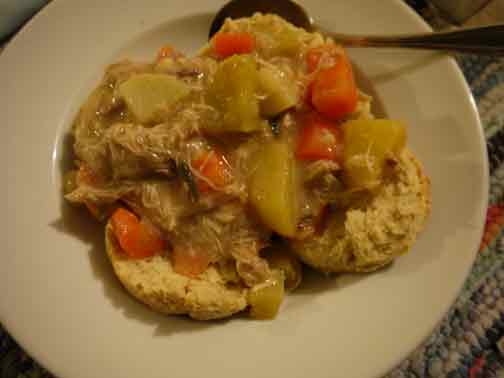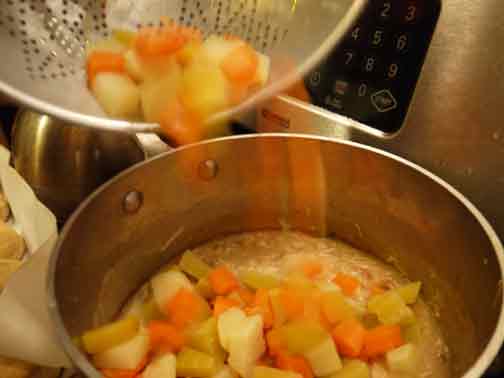Of all the vegetables that I plant, of all that I tend, of all that I harvest, of all that I cook, I am most grateful for garlic.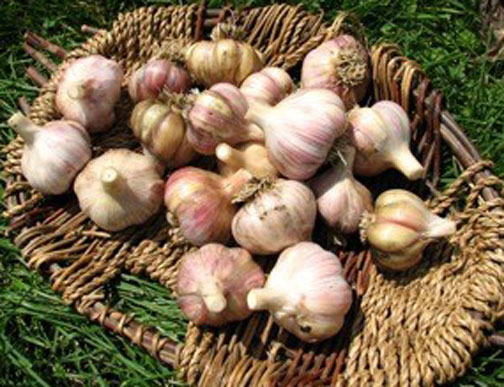 Garlic in basket. Photo by Lauren Slayton
Garlic in basket. Photo by Lauren Slayton
As a garden crop, garlic is a prize-winner. It is planted in late October, when most of the other garden chores are over. There is time – time to work the bed, time to mulch before the weeds threaten, time to put away clean the garden tools and put them away for the winter. Time to rock back on my heels and appreciate how rewarding the garden can be.
Then, if I’m lucky, the snow comes and buries the garlic for months. The garlic is safe, and I am done with it. Come spring, garlic will sprout up first—a significant part of the garden all set for the growing season.
This year, like most, the garlic harvest came after the peas and spring greens were spent and before the green beans were really coming on. I’ve been stealing a bulb here and there for cooking, but not worrying about the garlic at all.
You have a much wider window of opportunity for harvesting garlic than most plants. Yes, if you wait too long, it could rot in the ground, or at least the outer skins could rot away, leaving the bare, unprotected cloves. But generally you can wait for a nice sunny day for the garlic harvest.
 Just harvested garlic left to dry
Just harvested garlic left to dry
Of course, I am grateful for the flavor garlic brings to food. Neither Italian nor Chinese foods would tantalize like they do without garlic. Without garlic, there would be no Jewish half sour pickles, no French aïoli (garlic mayonnaise), no Italian spaghetti aglio e olio (pasta with garlic and oil), no Spanish gambas al ajillo (garlic shrimp), nor Greek skordalia (a dip of potatoes and garlic).
Finally, I am grateful for any reason to cool myself in the river where I wash my bulbs. I sit in the river, rub the dirt from the bulbs, and plunk them into a-five gallon bucket. And then I think to myself, work doesn’t get any better than this. The river where I wash my garlic
The river where I wash my garlic
Marcella Hazan has a perfect recipe for spaghetti with garlic and oil, with a variation that includes tomatoes.
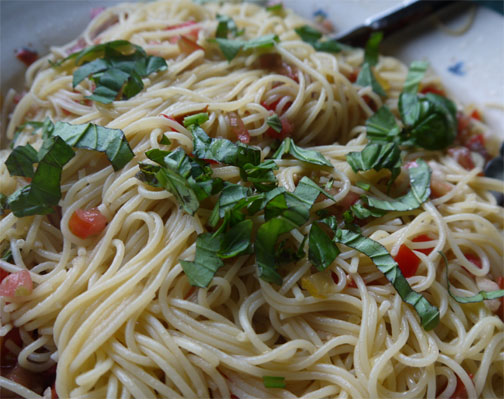 Spaghetti with garlic, oil, and tomatoesI followed her version fairly faithfully, using 1 pound of vermicelli, ½ cup good extra virgin olive oil, and 4 cloves garlic. A little basil to garnish, salt and pepper.
Spaghetti with garlic, oil, and tomatoesI followed her version fairly faithfully, using 1 pound of vermicelli, ½ cup good extra virgin olive oil, and 4 cloves garlic. A little basil to garnish, salt and pepper.
 Yellow Taxi tomato, black Nyagous tomatoes, and Romas, with garlic and basil
Yellow Taxi tomato, black Nyagous tomatoes, and Romas, with garlic and basil 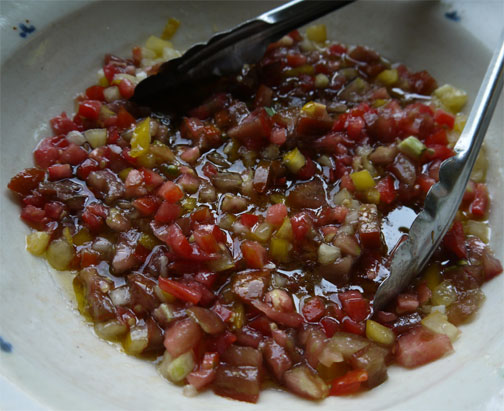 First the oil goes in the bowl, then the garlic, then the tomatoes. Add the hot pasta and toss. Garnish with basil. Simple.
First the oil goes in the bowl, then the garlic, then the tomatoes. Add the hot pasta and toss. Garnish with basil. Simple.
That’s it. I doubled the tomatoes, however, and didn’t bother to peel and seed them. It is summer, after all. Who has time to peel tomatoes? The river calls.








